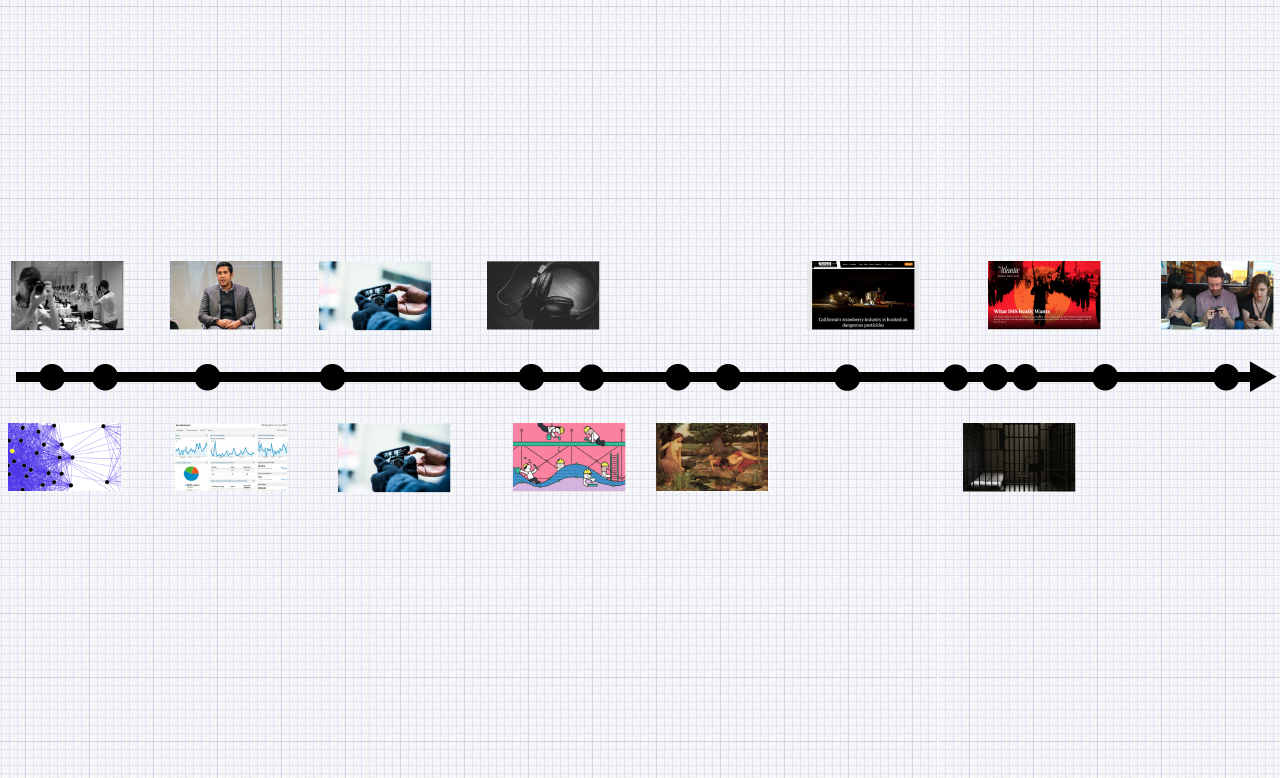It’s been 3 months since we started our metrics coverage on the MediaShift site. The first couple of months were informal; we spent most of our time onboarding, making connections with smart people and building our infrastructure and workflow. This last month we’ve been trying to bring you more resources and coverage on metrics, analytics and measuring impact.
Whether we write the content ourselves or whether we find great minds out on the Internet who are already writing about these key issues, we want MetricShift to be a place that you can come back to every week and find new, in-depth coverage to help you understand the complicated topic of media metrics.
Some of you have been with us from the beginning, but a lot of you haven’t. It’s the joy of growth; we get to know our old friends better and are constantly inviting new friends to the party! I wanted to write this post to remind those of you who’ve been with us since day one and introduce those of you who’ve just joined us to what we’ve put out there so far.
Tuesday isn’t the most alliteration-friendly day for this, but join us anyway for a Throwback Tuesday.
——

The first article posted on the MetricShift section. Click here to read the predictions article. (Photo by Yasunari Nakamura on Flickr and used here with Creative Commons license.)
In the beginning, we attempted to look forward to the new year by looking back at what had happened in metrics during 2015. We also made some predictions that are looking pretty good so far.
This year, we’ll also try and keep up with the innovations and trends in metrics and analytics. We’ve already published posts about how live streaming is changing how journalists measure video, about the future of podcasting metrics, and about how the email newsletter is being reinvented.
We’ve republished some great articles that look at quantity and diversity, both in audience commenting and in how news is consumed around major events.
Since our coverage is pretty new and both survey results and outreach have indicated that many of our readers are at a novice level with regards to handling metrics and analytics, we’re dedicating a lot of our time to posting general, beginner’s guides.

Click here to view our survey results post. (Photo by Thomas Lefebvre used here under Creative Commons Zero license.)
I’ve heard a lot of apprehension in the voices of people I’ve talked to when they confess that they don’t know much about how to measure and talk about metrics. But seeing as how MOST of the people I talk to about metrics and analytics say they don’t know much, I figure we’re all in the same boat!
We’re hoping that you’ll follow along with us, take it slow and learn things like:
- how to start thinking about tracking metrics,
- how to clearly define your organization’s goals,
- how to use metrics for good instead of bad,
- the steps involved in measuring what matters,
- and even how you can start a social media/analytics class.
In addition to looking at your own numbers, it’s often helpful to look at how others are using metrics to make data-driven decisions and talk about impact. CIR/Reveal has brought us some great coverage on gauging the success of news interactives and on how they measure audience awareness after big investigations.
This piece from Parse.ly includes a video discussing how GateHouse Media uses analytics to make editorial decisions. And Chartbeat did an in-depth analysis about the metrics behind the most read article of 2015, The Atlantic’s “What ISIS Really Wants.”
Anjanette Delgado wrote about how Gannett used analytics to change when they posted content so it would more consistently line-up with when visitors were actually visiting the site.
And Brendan McCarthy, The Kentucky Center for Investigative Reporting’s managing editor, and I chatted about the metrics that matter most to the Center.
As a compliment to the more concept-based writing on metrics, we’re also bringing you more hands-on tutorials that walk you through things like how to use analytics to test your web design, diagnosing and fixing Google Analytics issues, some Google Analytics reports you should start using more, and using analytics to understand and improve audience engagement.

Click here to read about using analytics to improve audience awareness. (Photo by Karen via Flickr Create Commons license.)
You’ll notice a lot of references to Google Analytics. That’s because it’s free and most media organizations at least have it running on their websites. We want to make sure we aren’t excluding anyone with our coverage just because you don’t have the systems we’re writing about!
But we have posted a little bit about analytics tools and how they’ve developed, and we’ll be talking more about these tools and which work best for what in this week’s Twitter chat.
And every week, we’ll deliver metrics news from our site and from around the web right to your inbox. So you can be sure you’re reading what we’re reading. If you’re not signed up for our weekly newsletter yet, here’s a handy signup form:
We talk to you a lot, but we’re also trying to provide avenues for you to talk to us! Every other week, we hold Twitter chats to discuss some of the things we’ve been mulling over or received questions about. We also have a Facebook group dedicated to sharing stories and asking/answering questions.
Alexandra Kanik (@act_rational) is the Metrics Editor/Curator for MediaShift. In addition to her work with MediaShift, Alexandra is a freelance developer for news organizations around the country.


